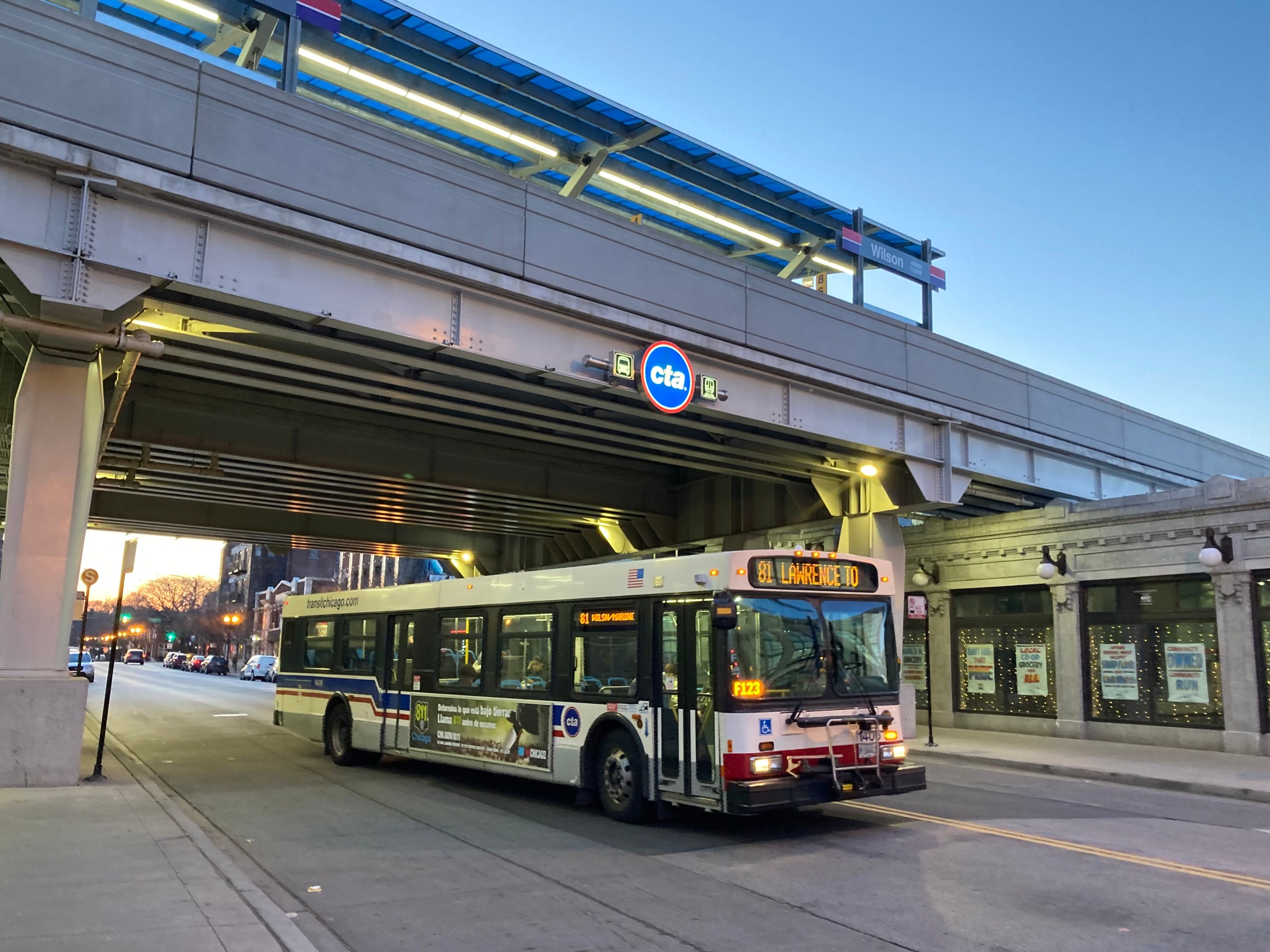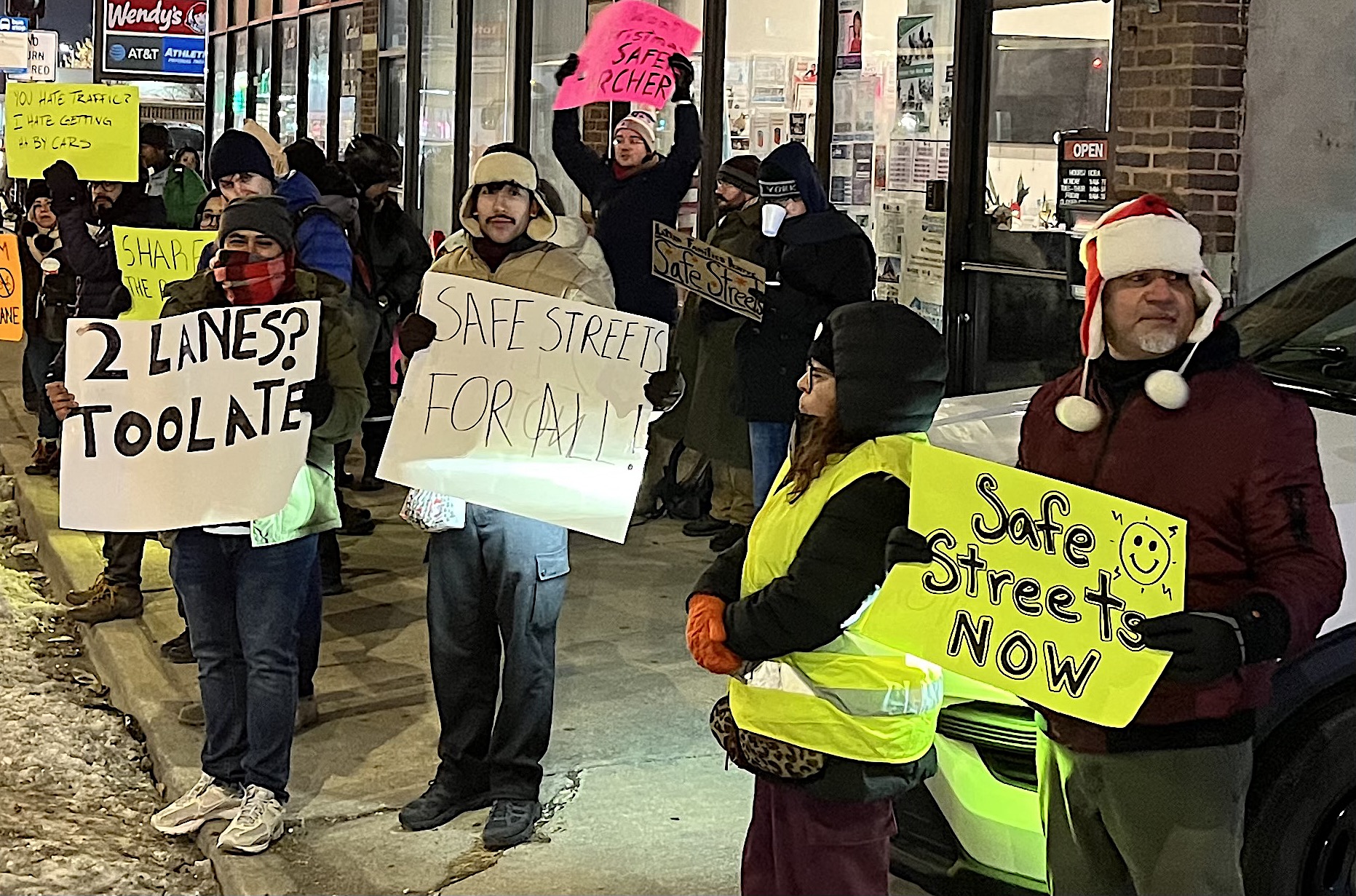Last month the Sun-Times ran an editorial with generally solid advice for the next mayor on what he should do to help fix the regional transit system. (The one item on the paper's to-do list that was questionable, given the recent history of policing on the 'L', is "push for more cops on the CTA.") The section on recommended mayoral strategies to address the estimated $730 million transit budget shortfall the region will face when federal COVID funds run out in 2026 was particularly salient:
- Helping to lobby to lower or get rid of the systemwide requirement that the CTA, Metra and Pace together generally cover at least 50 percent of their costs with farebox revenues. Until ridership is restored, that is not realistic, and other major transit systems don’t have such a high requirement. Boston, for example, requires just 9 percent. The requirement was suspended during the pandemic, but is scheduled to resume. Besides farebox revenues, the transit agencies also get money from sales taxes, real estate transfer taxes and federal and state grants.
- Joining with representatives of the Regional Transportation Authority, CTA, Metra and Pace to obtain additional funding for public transportation from Springfield, Washington and the City Council.
- Leading the charge to put an end to a “collection fee” that former Gov. Bruce Rauner imposed on municipalities and the RTA. The fee of 1.5 percent of sales tax revenues amounts to tens of millions dollars a year. Supposedly, the fee covers the cost of collecting sales taxes, but that is a duty the Illinois Department of Revenue has anyway. This is not a time to be siphoning money away from public transit.
While we're all waiting to see how tomorrow's mayoral runoff election shakes out, Streetsblog reached to the four local transit agencies their perspectives on this subject. What are they doing to make these ideas a reality?
Regional Transportation Authority
RTA, which oversees funding and planning for the CTA, Pace, and Metra released its "Transit Is the Answer" plan for dealing with post-COVID challenges on February 16. "We are now building a coalition that will meet regularly and participate in implementation," RTA spokesperson Melissa Meyer recently told Streetsblog. "We are planning a coalition kickoff [in April] and quarterly coalition meetings to begin in May. The plan also includes several early implementation actions such as convening a holistic safety summit, advancing a free or reduced fare pilot for low-income riders, beginning a regional climate action plan, and more."
Regarding the 50-percent farebox recovery ratio issue, Meyer said, "In December 2021, the Illinois General Assembly granted temporary relief from the recovery ratio requirement through the end of 2023. The RTA believes that a permanent change to the current statutory recovery ratio requirements is warranted and will enable more equitable delivery of transit service across the region." She added that state legislators are in talks with the transit agencies to "obtain continued recovery ratio relief while developing permanent funding structural reform."
Meyer added that "Transit is the Answer" included 27 possible funding solutions to address the budget gap, with the following 11 being the most promising:
- Increase RTA sales tax
- Increase state motor fuel tax
- Implement congestion pricing
- Expand RTA sales tax on services
- Implement vehicle miles traveled tax
- Expand real estate transfer tax
- Increase tollway tolls
- Increase State Public Transportation Fund match
- Increase vehicle registration fee
- Increase state reduced fare reimbursement
- End state surcharge (the aforementioned collection fee implemented under Rauner)
Metra
Metra spokesperson Michael Gillis told Streetsblog that, in addition to supporting RTA's plan, the commuter railroad is trying to ensure the federal relief dollars last as long as possible while also providing high-quality service that will encourage ridership. He said Metra is working alongside the CTA and Pace to advocate for more funding.
Gillis noted that Metra released its own strategic plan, "My Metra, Our Future," on February 15. "As we note in our plan, part of [addressing funding challenges] is recognizing the need to adapt to new ridership patterns and changing rider behavior, one of the top challenges in the years ahead. That's why our vision calls for moving towards... more frequent all-day service."
Gillis also pointed to the stated strategic goals for the next five years at Metra.
- Enhance service to grow ridership and provide mobility choices
- Ensure the Metra experience is safe, easy, and enjoyable for all our customers
- Attract a diverse workforce and invest in our employees
- Innovate to become more efficient and effective
- Be a socially responsible organization committed to equity and sustainability
CTA
CTA ridership has been gradually recovering the from the Stay at Home era, but 2022 ridership was still only 54 percent of 2019 levels, with 240.7 million trips taken last year. The agency's 2023 budget projected that ridership would increase by 9 percent this year compared to 2022. To supplement its farebox revenue, the CTA is looking at ways to boost other revenue sources, such as advertising, but a spokesperson acknowledged that more will beed to be done to close the impending budget gap.
"Despite these challenges, CTA along with its fellow service boards... is working together to improve service and connectivity across the region," the spokesperson said. "This includes rethinking our fare products and offering unlimited-passes that can be used across multiple systems for a lower price."
Pace
Pace spokesperson Maggie Daly-Skogsbakken noted that while the transit agencies are generally required to cover 50 percent of their operating expenses through system-generated revenue like fares and advertising, Pace's paratransit service is a little different, with only 10 percent requirement. "Pace is supportive of a permanent, sustainable funding solution; However, legislation is needed to change any funding formula. We are working with our peers, and we are hopeful that the existing recovery ratio waiver will be extended."
Regarding efforts to win more city, state, and federal funding for Chicagoland transit, Daly-Skogsbakken said, "Pace is at the table, alongside our peers and legislators, to look at all scenarios and options. It is our hope we can find solutions to not only maintain a state of good repair, but to continue to implement innovative transit services that meet the current and future needs of those we serve, like our new VanGo program and our partnerships with Transportation Network Companies [ride-hail] for first/last mile connections."
Daly-Skogsbakken added the suburban bus system has has already taken steps to address the looming fiscal cliff by making "the difficult, but fiscally responsible, decision to reduce or eliminate unproductive service last year." She added that Pace's Project Zero plan will transition the system to zero-emission vehicles, which will reduce fuel costs in the long run.
2026 and the regional transit funding crisis will be upon us sooner than one might think, so it's good that RTA, Metra, CTA, and Pace are being somewhat proactive about finding solutions. But as the Sun-Times noted, local leaders – including the next Chicago mayor – need to get serious about permanently reducing the farebox recovery ratio; finding new funding sources; and abolishing Rauner's collection fee ASAP.





